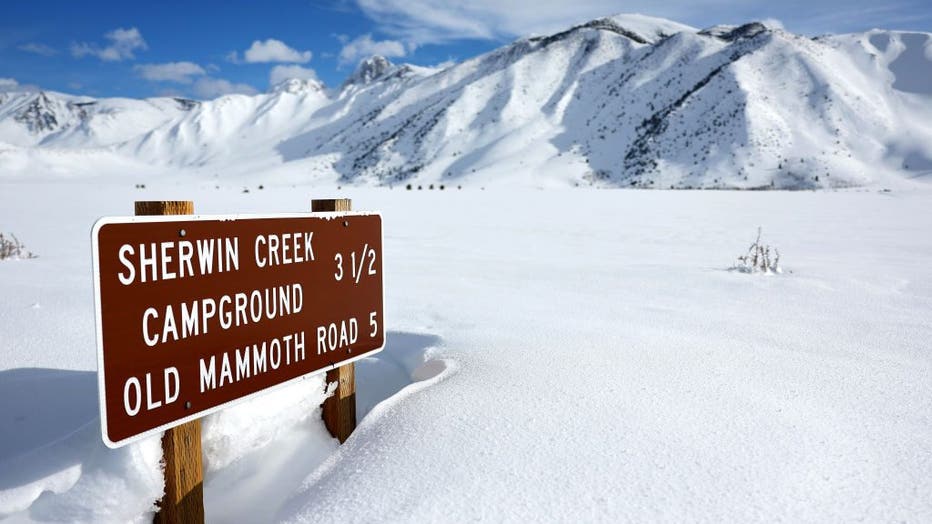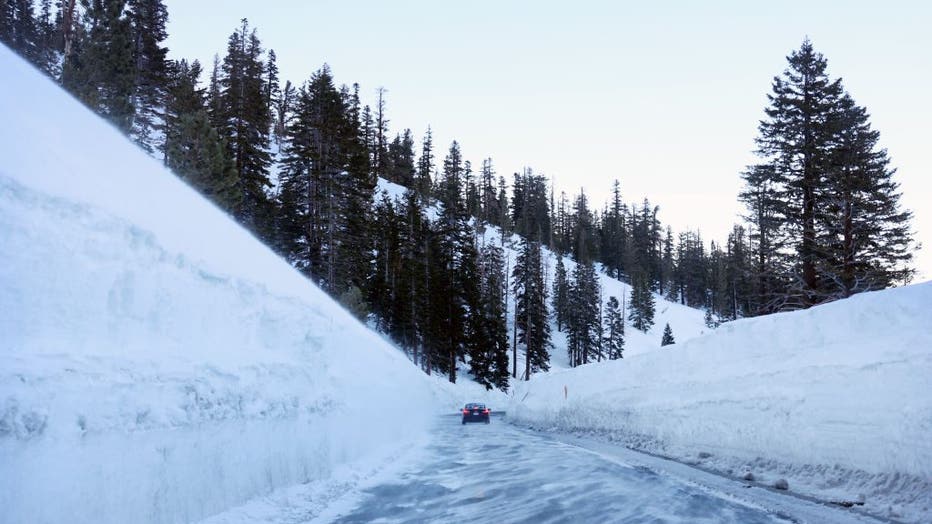Officials: Epic California snowpack among biggest on record
Officials: Epic California snowpack among biggest on record
This year’s epic snowpack in California’s Sierra Nevada could top records, state officials said Monday, and significant flooding is expected when it melts and flows down from the mountains.
This year’s epic snowpack in California’s Sierra Nevada could top records, state officials said Monday, and significant flooding is expected when it melts and flows down from the mountains.
Just months after the state was dangerously deep in drought, its reservoirs are filling, with the snowpack yet to melt.
The water content of the statewide snowpack as reported by a network of automated sensors on Monday was 237% of average to date, said Sean de Guzman, water supply forecasting unit manager for the California Department of Water Resources.
California snow pack now among deepest on record
After weeks of storms California now has a snow pack that's 200% more than what's typical for this time of year, but officials fear a large melt could lead to flooding.
Mammoth Mountain sees snowiest winter on record
Mammoth Mountain has seen 668 inches of snow this winter, breaking a record set in 2010-2011. The mountain will be open to skiing through at least July.
That is greater than any previous April reading since the sensor network was deployed in the mid-1980s, de Guzman said. Manual measurements on "snow courses" date back to 1910 and only the years 1952, 1969 and 1983 showed a statewide result greater than 200% of average in April.
The record 1952 measurement was also 237% of average, but there were fewer snow courses measured then and the addition of others over the years makes it difficult to compare across decades results with precision, according to de Guzman.
California snowpack among highest ever recorded
The statewide snowpack is tied with 1952 as the biggest haul since official records began in 1950.
Manual measurements continue to the present day, but weather and other dangers, including the threat of avalanches, have prevented access to some locations.
SUGGESTED:
- 13th atmospheric river passing through SoCal after historic drought
- Grapevine remains open after another round of snow
- Mammoth Mountain declares snowiest season on record
- Grant program available for San Bernardino County businesses impacted by storm
De Guzman said the state is waiting for more survey results to come in from partners including the National Park Service, the U.S. Forest Service and utility companies.
"But as of right now it’s looking like this year’s statewide snowpack will probably, most likely be, either the first or second biggest snowpack on record," said de Guzman, who conducted a manual measurement on snow course at Phillips Station near Lake Tahoe.
California was three years into drought, with dwindling reservoirs and parched landscapes, until an unexpected series of powerful storms including more than a dozen atmospheric rivers began in December.

A road sign is partially buried in snow in the Sierra Nevada mountains after yet another storm system brought heavy snowfall to higher elevations further raising the snowpack on March 30, 2023 near Mammoth Lakes, California. (Photo by Mario Tama/Gett
While causing widespread damage, the storms also built the extraordinary Sierra snowpack, which supplies about a third of California’s water. Reservoir storage statewide is now 107% of average.
"The real challenge as we move into spring and summer though is flooding — significant flooding — particularly in the Tulare Lake Basin," said Karla Nemeth, director of the Department of Water Resources.

A car drives past snowbanks in the Sierra Nevada mountains on March 27, 2023 in Mammoth Lakes, California. (Photo by Mario Tama/Getty Images)
The basin once held Tulare Lake, a vast body of water in the Central Valley below the western slope of the Sierra. Settlers began draining it or diverting its water sources in the 19th century, converting it to farmland. The lake has already begun to reemerge due to this year’s runoff.
Snowmelt runoff projections will be released next week, but de Guzman predicts records will be broken. That will include "an absurdly high 422% of average" for the Kern River watershed, which drains into the southern end of the Central Valley, he said.

